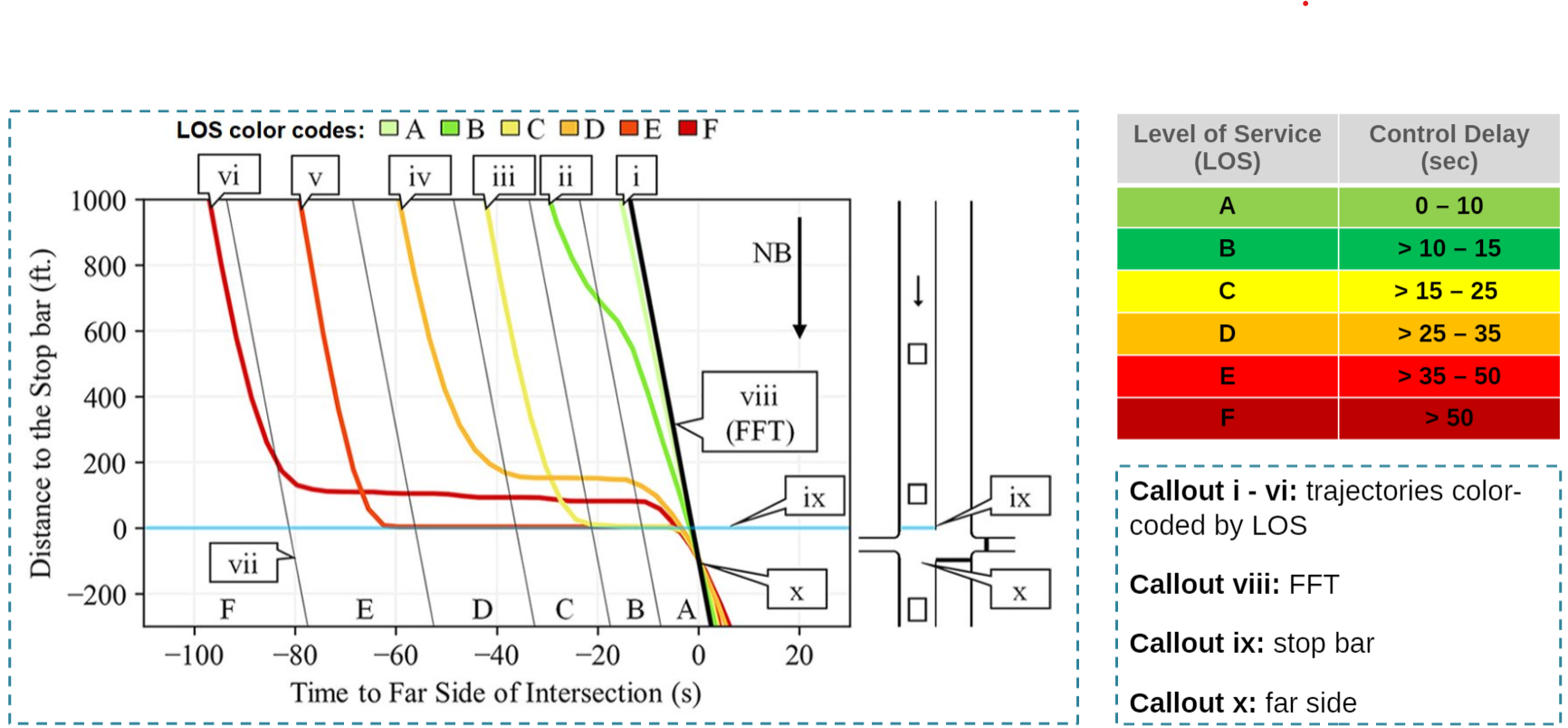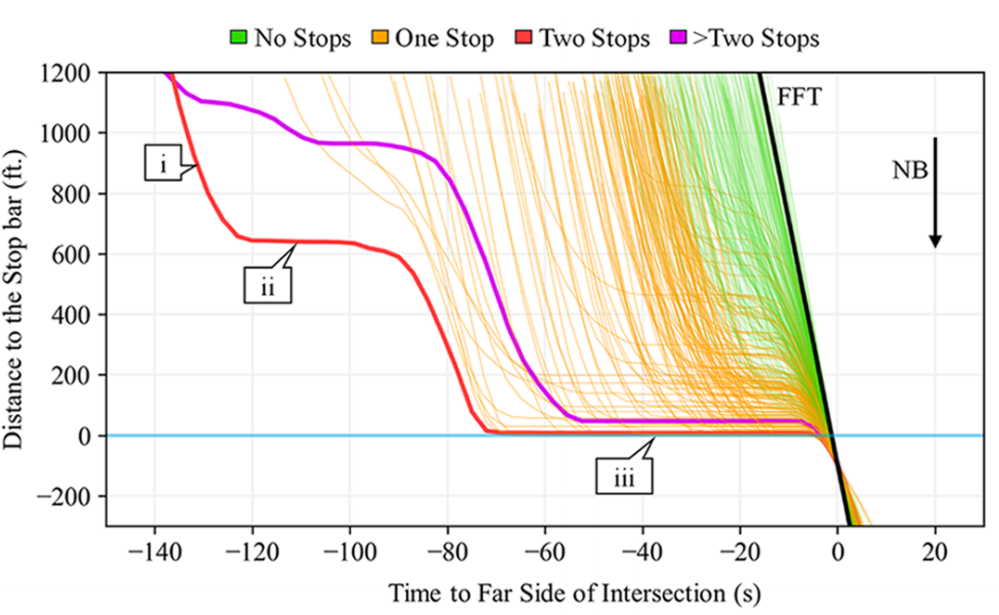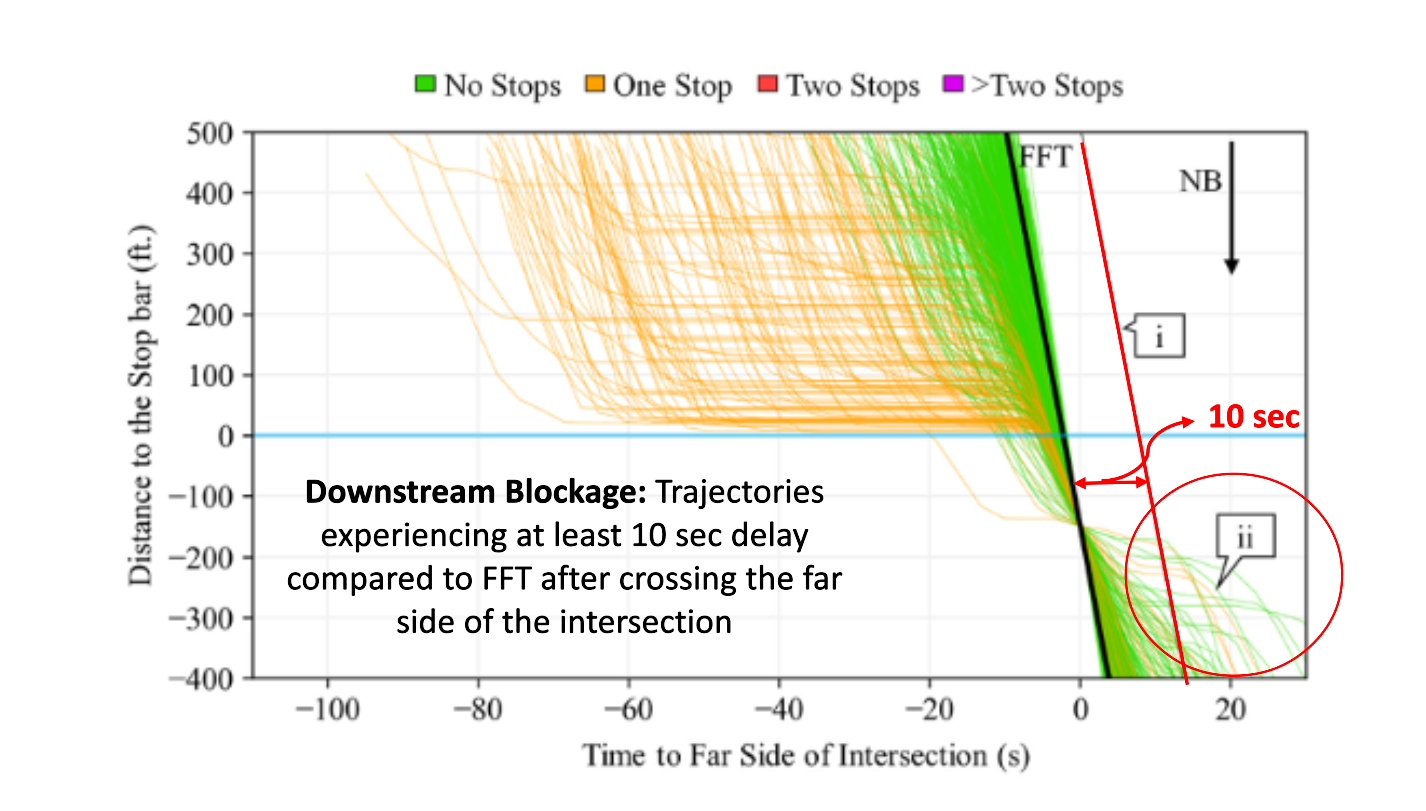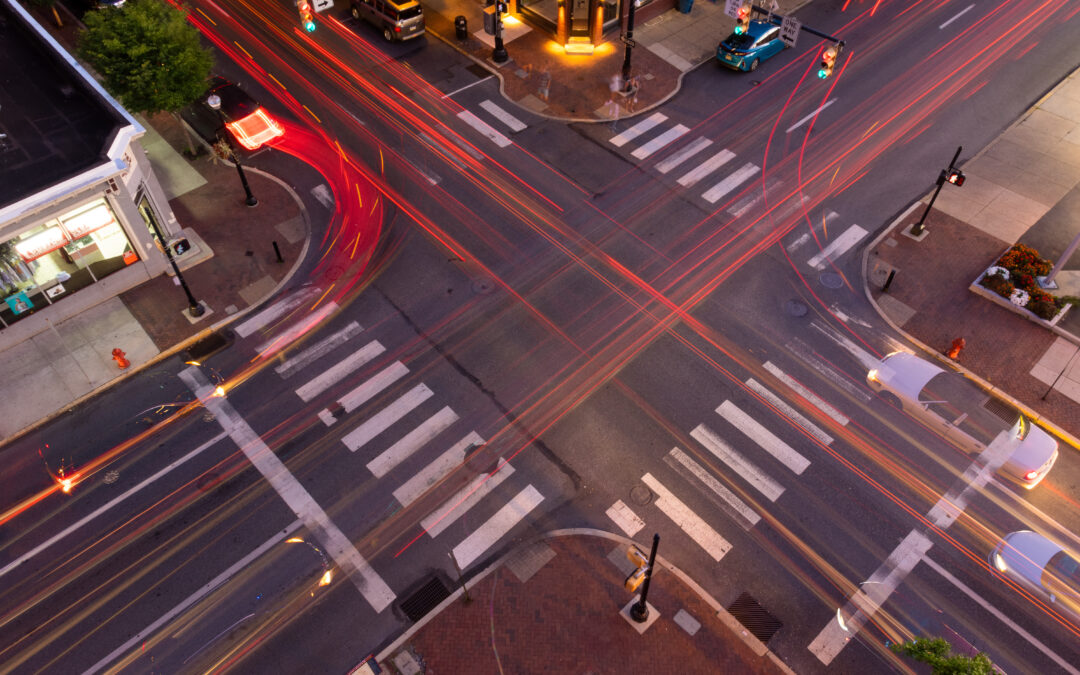Automated Traffic Signal Performance Measures (ATSPMs) are the visual reports and actionable performance measures that are generated through the collection of traffic signals and detector data. Agencies can use this data to manage traffic signals in their systems by monitoring how signals are performing and assessing the impact of signal changes. ATSPMs have traditionally been collected through physical detectors; however, emerging high-resolution connected car (HRCC) trajectory data can potentially be a more optimal, cost-effective method for ATSPM and enhanced analysis.
Traditional Method
ATSPMs are commonly collected using physical detectors, such as stop bars and advance detection, using inductive loops, radars, or cameras. Real-time traffic measurements obtained from vehicle detector data, combined with Signal Phase and Timing (SPaT) data, can generate several performance measures, such as those reviewed in this article. However, significant investments are required for the installation, inspection, and maintenance of detectors.
New Method: High-Resolution Connected Car Trajectory Data
HRCC trajectory data can be used to analyze traffic metrics and patterns for signalized intersections. HRCC data provides the location, speed, and heading of the vehicle in 3-second intervals, making it highly accurate. Since the data is coming from vehicles’ GPS systems, the position data is accurate to the lane level. No additional infrastructure or hardware is needed to implement this data collection method. This means that what is normally a significant investment for agencies is substantially more cost-effective.
HRCC trajectory data can provide similar metrics as traditional methods, such as travel time, delay, arrival on the green, and split failure. Additionally, because it can provide individual vehicle trajectories, the metrics are more accurate and can offer advanced visualization of traffic data by colour-coding each trajectory based on control delay (colour-coded level of service charts) or the number of stops, making it more informative than traditional methods. The time-space diagrams showing trajectories colour-coded by the number of stops are called Purdue Probe Diagrams (PPD), which provide in-depth traffic data, as discussed in this article by Saldivar-Carranza et al., and summarized below.
Color-Coded Level of Service (LOS) Charts
HRCC trajectory data obtains the amount of stopped and control delay experienced by each vehicle. Individual trajectories can be assigned a LOS rating based on their experienced control delay using the table provided in the Highway Capacity Manual (HCM). Trajectory charts colour-coded by LOS make it easy to visualize the flowing smoothness for each time of day. Traditional methods cannot keep a record of a vehicle’s speed at all stages of the intersection, leading to an inability to estimate delay-related metrics for individual vehicles.

LOS Color-Coded Trajectory Chart
Source: https://trid.trb.org/view/1760070
Arrival on Green
Arrival on the green is the percentage of vehicles that arrive at an intersection during the green phase. It can be calculated as the ratio between trajectories that had no stops during the approach and the total number of trajectories. The PPD, colour-coded by the number of stops, can provide stop details that are not possible with traditional methods. Counting the number of stops and measuring the time a vehicle is delayed for deceleration, stop, and acceleration is only viable with the availability of high-resolution speed data. One of the main limitations of traditional methods is the shortcomings of detectors in recording vehicles’ speed at different distances from the intersection stop bar.
Split Failures
Split failures occur when one vehicle experiences two or more stops while at an intersection. This leads to a situation where the vehicle is unable to pass the stop bar in one cycle length, signalling that there is not enough green time during the cycle. Using the PPD colour-coded by stop numbers, vehicle trajectories show how many stops were made and at what distance to the stop bar, making it easier to identify problem areas.
Identification of split failure is also viable using detector data. Additional occupancy detectors at the stop bar are required to measure the percentage of the green phase with occupancy (green occupancy ratio or GOR) and percentages of the first few seconds of red with occupancy (red occupancy ratio or ROR). The split failure is when both GOR and ROR are higher than 80% in the traditional method. GOR is sensitive to the length of the occupancy detector zone, and a larger detection area results in higher GOR values, making detector-based metrics less reliable in measuring split failures.

PPD Displaying Split Failure Percentage
Source: https://trid.trb.org/view/1760070
Downstream Blockage
Downstream blockage occurs when vehicles’ progression is restricted by a queue at the downstream intersection. In other words, a queue of vehicles jammed at one intersection creates delays for cars at the adjacent intersection. The PPD displays trajectory delays after crossing the intersection, providing information on where and when this blockage is occurring. Using traditional methods, additional downstream detectors are required to identify downstream blockage.

PPD Displaying Trajectory Delays
Source: https://trid.trb.org/view/1760070
Travel Time and Delay
HRCC trajectory data is capable of measuring control delay and travel time from operational field data, making the data highly accurate and precise. The delay from the traditional method is the amount of time between vehicle actuation at the advanced detector (converted to arrival time at the stop bar) and when that phase receives a green light. This method is sensitive to the location of the advanced detector and fails when queues extend beyond the advanced detector.
Purdue Coordination Diagrams vs Purdue Probe Diagrams
Purdue Coordination Diagrams (PCD) are generated for sensor detection methods. While these diagrams show which vehicles arrive on green or red, it is difficult to fill in knowledge gaps, and the cause of delay must be inferred. Measuring arrival on the green using detectors is highly sensitive to the location of advanced detectors since long shockwave queues passing the detector location can interfere with green arrivals’ detection. As shown in the PCD graph (Figure A), there is a gap in green arrivals as the cycle time progresses. This gap happens as the queue extends beyond the advance detector, and it can be interpreted as the oversaturated condition where demand is higher than capacity. However, it is impossible to know if the queue is not completely discharged and the low number of green arrivals is simply because of the low demand. In comparison, Purdue Probe Diagrams (PPD) are generated by newer, trajectory-based analysis, and offer greater insight such as flexibility in the determination of detection distance from the top bar.

Figure A: PCD Chart. Figure B: PPD Chart.
Source: https://trid.trb.org/view/1760070
Comparing HRCC Trajectory Data and Detector Data ATSPMs
HRCC trajectory data and detector data have different advantages to consider in relation to project goals and available resources.
|
|
HRCC |
Traditional |
|
Accuracy |
More accurate travel time, delay, split failure and arrival on green because of PPD insights |
Less accuracy regarding travel time and delay data, split failure and arrival on green using PCD |
|
Cost |
More cost-efficient |
Less cost-efficient; Additional detectors for different metrics |
|
Location |
More flexible distance and greater location data |
No distance flexibility and less expansive location data |
|
Sample Size |
Smaller sample size |
Larger sample size |
|
Number of Metrics |
Limited due to lack of SPaT data |
Traditional detection methods for collecting ATSPMs require a large infrastructure investment and cannot provide data as advanced and in-depth as HRCC trajectory data. HRCC trajectory-based analysis methods are more affordable and provide more accurate, high resolution traffic data, filling in knowledge gaps that are beneficial to signal timing decisions.
Using connected car traffic data collection methods, agencies can access a wealth of data and make informed decisions regarding their traffic signal systems.

